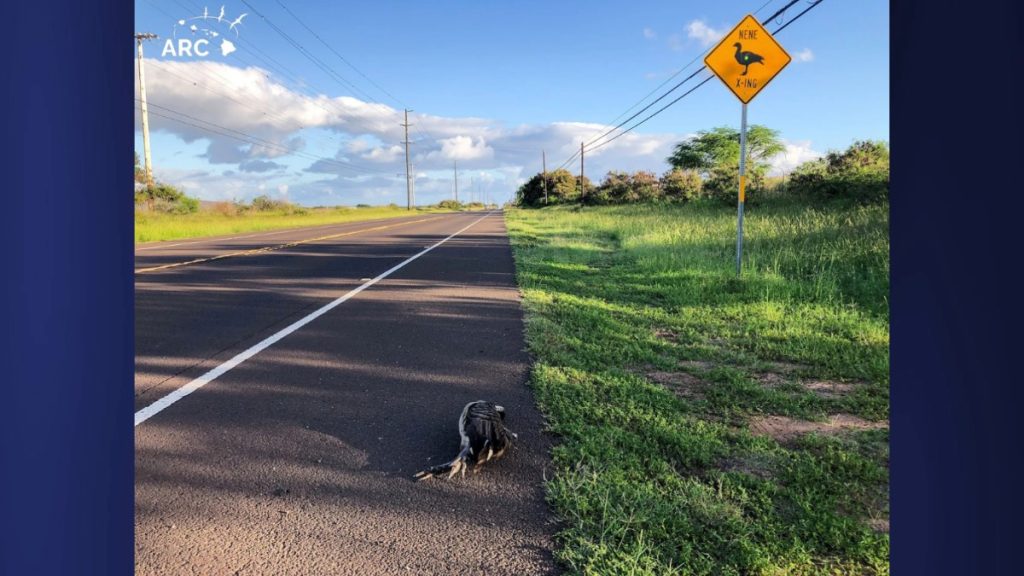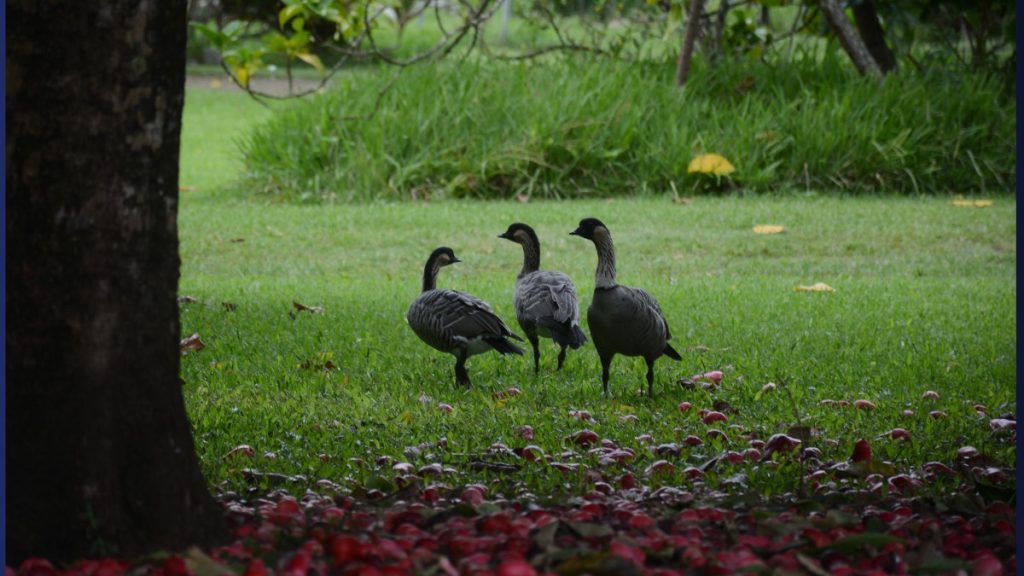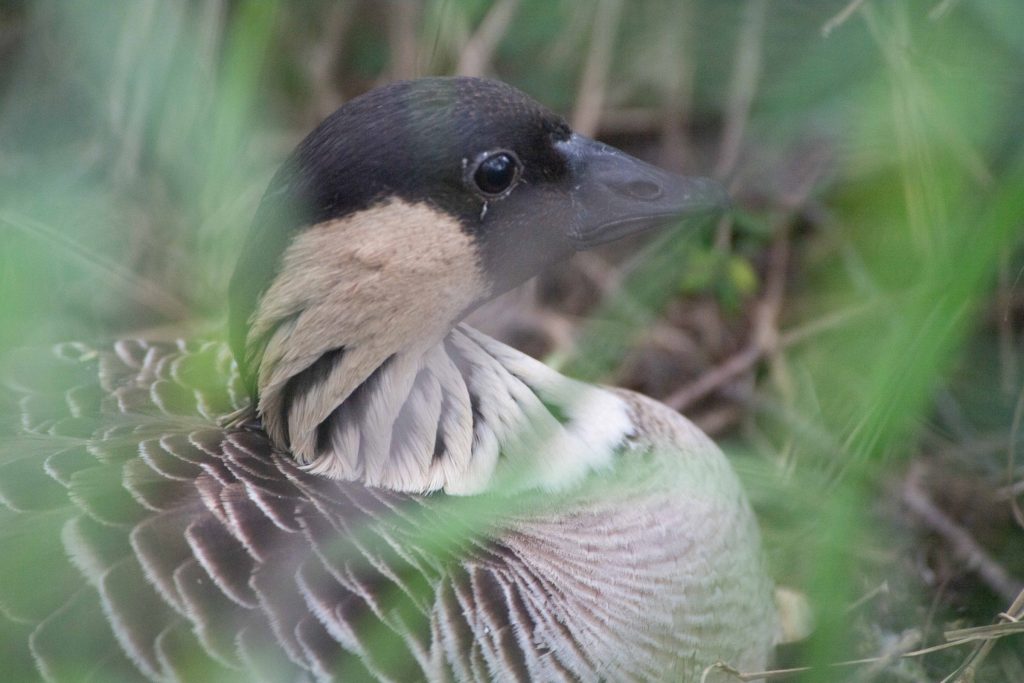West Kauaʻi highway becomes focus of new initiative to reduce nēnē deaths

A new conservation initiative is underway on Kauaʻi’s west side to address a troubling trend: frequent vehicle collisions with the endangered Hawaiian goose known across the islands as nēnē (Branta sandvicensis).
“The newly announced Mānā Plains Nēnē Project, run by the Archipelago Research and Conservation, will focus on a five-mile stretch of the Kaumualiʻi Highway in West Kauaʻi where mortality rates for nēnē have spiked.
“Itʻs really heartbreaking to see nēnē getting killed needlessly on the road,” said Dr. Andre Raine, science director with the Archipelago Research and Conservation.
The nēnē was designated as Hawaiʻi’s State Bird in 1957. They nearly went extinct in the 1950s, but due to extensive local and international conservation efforts, including captive breeding, they are now making a recovery.
The nēnē population has increased to roughly 3,864 across the state, with Kaua’i accounting for 60% of the total.

“They are one of our most iconic Hawaiian species,” Raine said. “The Mānā Plains Nēnē Project aims to address the issue of road and human infrastructure collisions involving nēnē.”
The Mānā Plains Nēnē Project was launched on Oct. 30, and its fruition came after staff “noticed a high number of nēnē dying on the stretch of highway from Kekaha Second Ditch going west,” Raine said.
“The team was contracted by the state Division of Forestry and Wildlife on Kauaʻi, after the Pacific Missile Range Facility had secured funding for the project through the Department of Defense’s Readiness and Environmental Protection Integration program,” said Raine.
In one recent two-week period, five nēnē were found injured or dead along that section of road.
According to the Archipelago Research and Conservation project manager Jillian Soller, the corridor from Second Ditch in Kekaha to beyond the Kawaiʻele Waterbird Sanctuary has recorded some of the highest nēnē fatality counts in the state.

“It’s upsetting to see how many birds are being killed along this highway,” Soller said. “During nesting season, when one member of a pair is killed, the other often stays to mourn them in the road and is killed, too. Sometimes, entire families with goslings are wiped out in one go. That’s why we are excited to be launching this project.”
The new project will begin its first phase with field research: monitoring vehicular traffic, mapping nēnē crossings, and deploying GPS trackers on adult birds to better understand why they are drawn to this dangerous roadside.
Based on that data, the team will collaborate with the Department of Land and Natural Resources, the Hawaiʻi Department of Transportation, and local land managers to design targeted mitigation strategies, potentially including speed-reduction measures, signage upgrades, roadside vegetation changes or other physical deterrents.
“We hope to continue to work with partners to implement the recommended solutions and monitor the results,” Raine said.
For West Kauaʻi, where remote roadways meet migrating flocks, the stakes are especially high. Raine adds that “the community can also make a huge difference by just being vigilant for native wildlife on the road or on the roadside — especially now as we are entering nēnē nesting season when the birds are even more vulnerable.”

The overall goal is to work with partners and the community to create lasting solutions that protect nēnē and assist local agencies and businesses.
If the project succeeds, it will serve as a blueprint for other high-risk zones across the island.
Residents and visitors are encouraged to help by reporting any dead or injured nēnē spotted on the island. Contact the state nēnē biologist, Anna, at 808-634-0963. For questions about the project or nēnē in general, please reach out to Jill Soller at the Archipelago Research and Conservation at 805-279-2197.
For more information on the nēnēs or to learn more about the Mānā Plains Project, click here.



